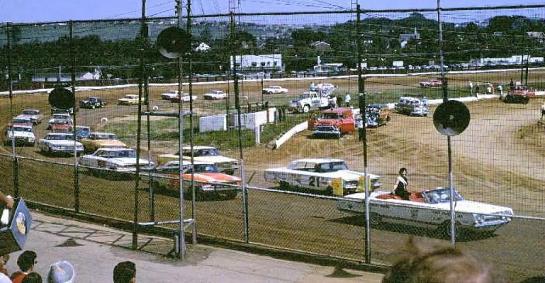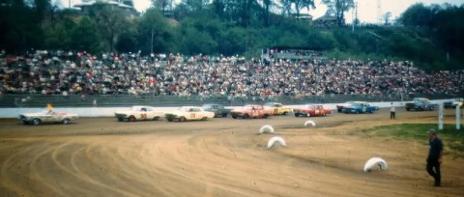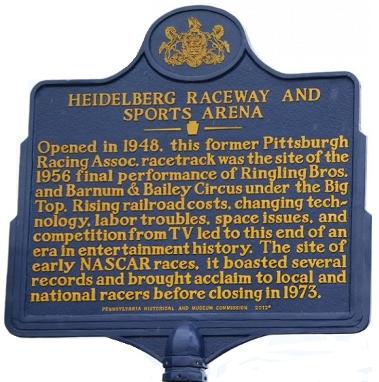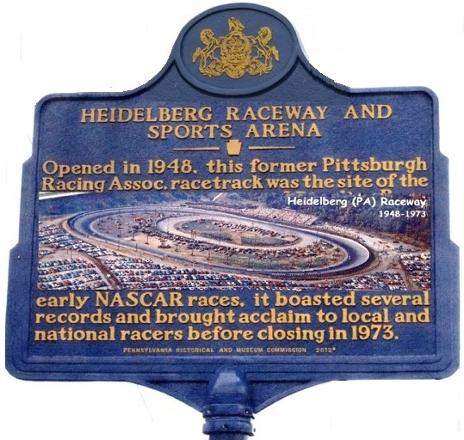HEIDELBERG RACEWAY - PITTSBURGH PA

The track was the brain-child of the original Wrights Sea Food Inn owner, Ike Wright. It was originally constructed between 1947 and 1948 to be used as a horse racing establishment, with help and financial backing by Pittsburgh Steelers founder Art Rooney. When horse racing was not legalized in Pennsylvania., the track was converted into a place for autos to compete. The original track was a 1/2-mile dirt track that eventually had a 1/4-mile track cut into its infield. The tracks shared part of a straightaway that existed in front of the main grandstands. The first races happened at the track in May 1948. When the race began, the air became dusty from the cars racing around the track. Thursday nights were
selected because the Pittsburgh Pirates Major League Baseball team had only three Thursday night baseball games that season. Midget cars were the first weekly series and raced on the 1/4 mile track. Special events featured sprint
cars on the 1/2-mile track. From 1950 until 1953, the track began hosting coupe racing under NASCAR sanction. In 1954, Ed Witzberger took over promotion of the track, and eventually formed the Pittsburgh Racing Association (PRA) which raced coupes up to five nights per week including Thursday nights at Heidelberg. Chris Economaki, was the track announcer for special events in the 1950s. Heidelberg held the seventh event in the first season of NASCAR's Strictly Stock Series on October 2. The race was 200 laps around the 1/2 mile dirt oval. Lee Petty won his first NASCAR race at the track. Dick Linder finished second five laps

behind. Bill Rexford was third, followed by Sam Rice and Sara Christian. Christian's fifth place finish in that race was the highest finish by a woman driver in the top level of the NASCAR racing. To date that is the only time a female

has made a top five in the Cup Series. The next race saw Fonty Flock start on the pole, but crash out while leading on lap 21. Herb Thomas would pick up the lead at that point and lead the rest of the laps to get the win. Jim Fiebelkorn would finish second and Augie Walackas was third. It would be both of their best career finishes. The Cup Series didn't return back until 1959, and when they did, they raced on the 1/4 mile oval. Jim Reed would lead the final 46 laps to beat Rex White to the finish. Lee Petty was third. The final Cup
race was in July 1960 schedule for 200 laps. Lee Petty would beat son Richard by more than three laps to get the win. Rex White was third. Witzberger had both tracks paved before the 1967 season. At the end of the 1972 season, when track promoter Ed Witzberger and driver Tom Colella could not come to terms on a three-year lease, an agreement was reached where Colella would lease the track, for one year, in 1973. The track was permanently closed at the end of the 1973 season. Colella cited the 1973 oil crisis and urban sprawl as factors in the decision. There wasn't a facility in Western Pennsylvania and very few in the country that matched its amenities. The seating was state-of-the-art stuff. Witzberger had an electric scoreboard before anybody else had it. He had a press box with theater seating in it and it was air-conditioned. That track then is probably better than 90 percent of the tracks that exist today. And that was back in the '60s and '70s. He was always very progressive at the short-track level. There is a strip mall at the location the raceway used to be called "Raceway Plaza".


All Photos copyright and are property of their respective owners
